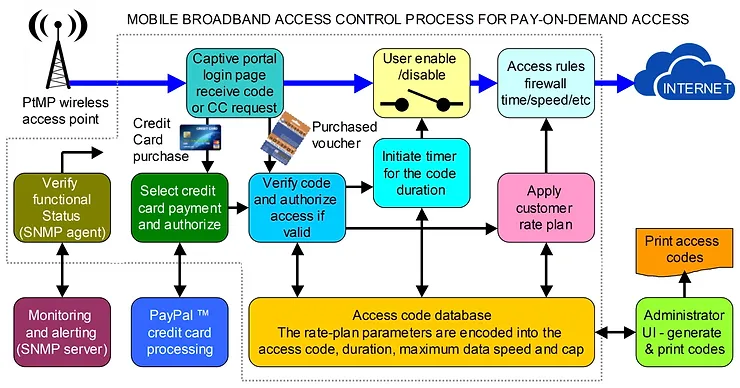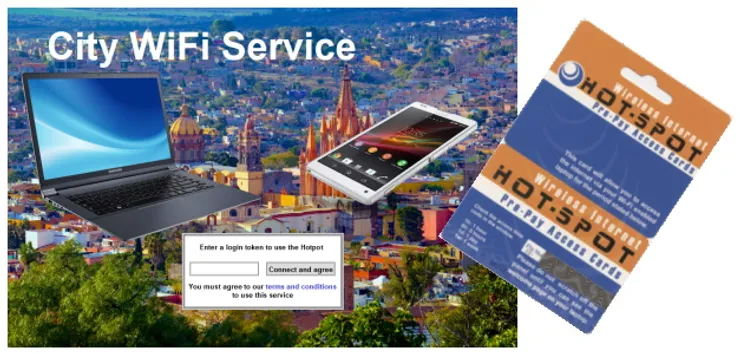The technical name for a public WiFi Hotspot is a mobile broadband service, and when there is a charge for the service it is called pay-on-demand. Public WiFi is available at many locations, including airports, hotels, campgrounds, RV parks and retail stores. Some locations like retail store provide the Internet WiFi for free. Some locations like RV parks may charge for the service when no 4G coverage. Some locations have a hybrid WiFi model. Airports may provide the first 30 minutes free and require payment for additional connection time. Hotels may provide a slower Internet service free and charge guests who want a fast Internet service.

Pre-pay-on-demand access for #mobile broadband requires a different authentication process than that used for a fixed broadband subscriber. In most cases the mobile broadband customer will be anonymous and will connect via an unencrypted PtMP wireless Hotspot. The customer will purchase an access credential either on line or purchase a voucher, such as a scratch-off card, that has an access code.
Access codes are generated by the #Hotspot gateway or by a cloud system that manages the gateway. Each access code has a rate plan associated with it, and that might include the following parameters:
Duration of the code before disconnection (hours, days, weeks)
Maximum limit for download and upload speeds
Maximum limit for download and upload byte count
Limit the code for one device, or for several devices sequentially
Limit the code for one device of specify how many concurrent devices
Unlike the pre-pay or post-pay fixed #broadband subscriber who always has an Internet connection, the pre-pay-on-demand customer does not have an Internet connection until the access controller verifies the access code. When the customer connects to the wireless #network the access control #router captive portal displays a login page in the browser with a box to enter the access code that the customer has purchased. A login page design can also provide the user with an option to purchase an access code on-line using a credit card for payment. The access code will have a fixed duration time and the customer will have Internet access until the access code duration expires.
Most routers can configure a captive portal and authenticate codes with a #RADIUS server. Some manufacturers make dedicated access controllers for mobile broadband that have code generation, voucher printing, authentication, activation and payment #gateway features in one product. Configuring a router requires a high level of technical skill, while configuring a dedicated #access #controller such as that manufactured by Guest Internet (www.guest-internet.com) only requires that the user knows how to use a computer.
The process diagram shown in the next figure illustrates the on-demand access control data flow.

The access code is compared with the database of access codes that have been generated and if the code is not found a message is displayed advising no access, and the data packet is discarded. When the code is identified then the customer access to the Internet is enabled for the duration specified, and with speed parameters specified by the code rate plan. The customer has Internet access for the duration specified by the code with the maximum download and upload speed settings and possibly a data cap that the code specified. The access codes are generated by an administrator and printed onto vouchers, or are generated on-demand when the customer purchases codes on-line.
The access control router includes a failure-monitoring component that can alert the administrator if the unit fails, and monitoring can include devices that are connected to the access control unit, such as wireless access points.
Manufacturers such as Guest Internet (www.guest-internet.com) package the functionality shown in the figure as a product called an Internet Hotspot gateway. This type of equipment is very popular and is installed in every hotel for guest Internet access, and by many businesses that provide an Internet access service for the public.
An example of a captive portal login page and an access code scratch-off card is shown in the figure below.

______________________________________________________________________
Readers are invited to share this information with others. If any reader has a question regarding this information please contact us via our contact page.
